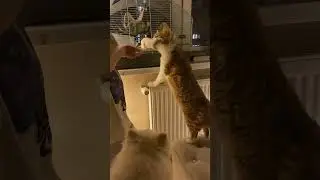Internal & External Blog Links 101
Confused by internal and external links? Or do you just need a refresher and some tips on how to get it all done, faster? I've got you covered with Internal & External Blog Links 101!
This training went down LIVE in my Badass Bloggers Facebook group, join now:
/ bablogger
Note: this is about linking out to others from your blog and linking out to your own posts - NOT about getting other sites to link to yours - that’s called backlink building and it’s a whole 'nother can of worms.
Blog Links Glossary:
Dofollow - tells search engines that you endorse this link. You’ve given it your nod of approval and are passing some “link juice” (blogging street cred.) to it.
Nofollow - tells search engines that you do not endorse this link. You’re not giving iit your nod of approval and no “link juice” (blogging street cred.) will be passed to it.
👉 External Blog Links
What:
⚫ An external link is a hyperlink that goes from your blog to another website
Why:
⚫ High-quality external links can add value for your readers and give your post more authority
⚫ Adding in reputable external links to back up your arguments show that the opinion you’ve formed is an educated one
⚫ External links can help you network
⚫ Linking out to other resources on the topic shows your readers that you’re here to serve them - even if that means pointing them in the direction of another blogger (trust building)
How:
⚫ Ctrl+K or Command+K
⚫ General rule of thumb is about 3 - 5 links per 1000 words (with exceptions for posts like round up posts)
Examples:
⚫ Products you’re reviewing (if it’s an affiliate link make sure it’s nofollow and marked as sponsored)
⚫ Statistic or quote sources
⚫ Articles or studies that back up your argument
👉 Internal Blog Links
What:
⚫ An internal link is a hyperlink that goes from your blog post to another one of your blog posts (on the same website)
Why:
⚫ Helps Google understand what each post is about, and what your site as a whole is about (SEO)
⚫ Encourages site crawlers and indexing (SEO)
⚫ Helps readers navigate to content that is relevant to them (user experience … which in turn benefits SEO
⚫ Can help increase your session duration
⚫ When you have links open in a new window, it doesn’t count as the same session but in my opinion (and this is a hotly debated topic!) the boost to user experience is worth the session time loss (meaning: always make links open in a new window)
How:
⚫ Ctrl+K (PC) or Command+K (Mac)
⚫ Add internal links near the top of your post and in the body when you find organic opportunities to do so
Examples:
⚫ Link to the next logical step for your reader, if you have a blog post on it
⚫ Link to any information they may need as a prerequisite for understanding the topic
⚫ Link to posts that explain topics in greater detail
⚫ Note: to make internal linking easier, use reusable blocks, Link Whisper (https://linkwhisper.com), or my Insanely Efficient Blog Organizer (https://blogfitiblogging.lpages.co/bl...)
👉 General blog link tips
⚫ Use a broken link checker
⚫ Make link auditing part of your blog post maintenance tasks
⚫ Don’t over-optimize your anchor text:
“Use descriptive keywords in anchor text that reflect the same topic or keywords the target page is trying to target. It's not necessary to use the same keyword text every time—in fact, doing so can trigger spam detectors. Instead, strive for a variety of anchor text that enhances context and usability for your users—and for search engines, as well.” - Moz
Source: https://moz.com/learn/seo/external-link
⚫ Mark affiliate links as nofollow and sponsored







